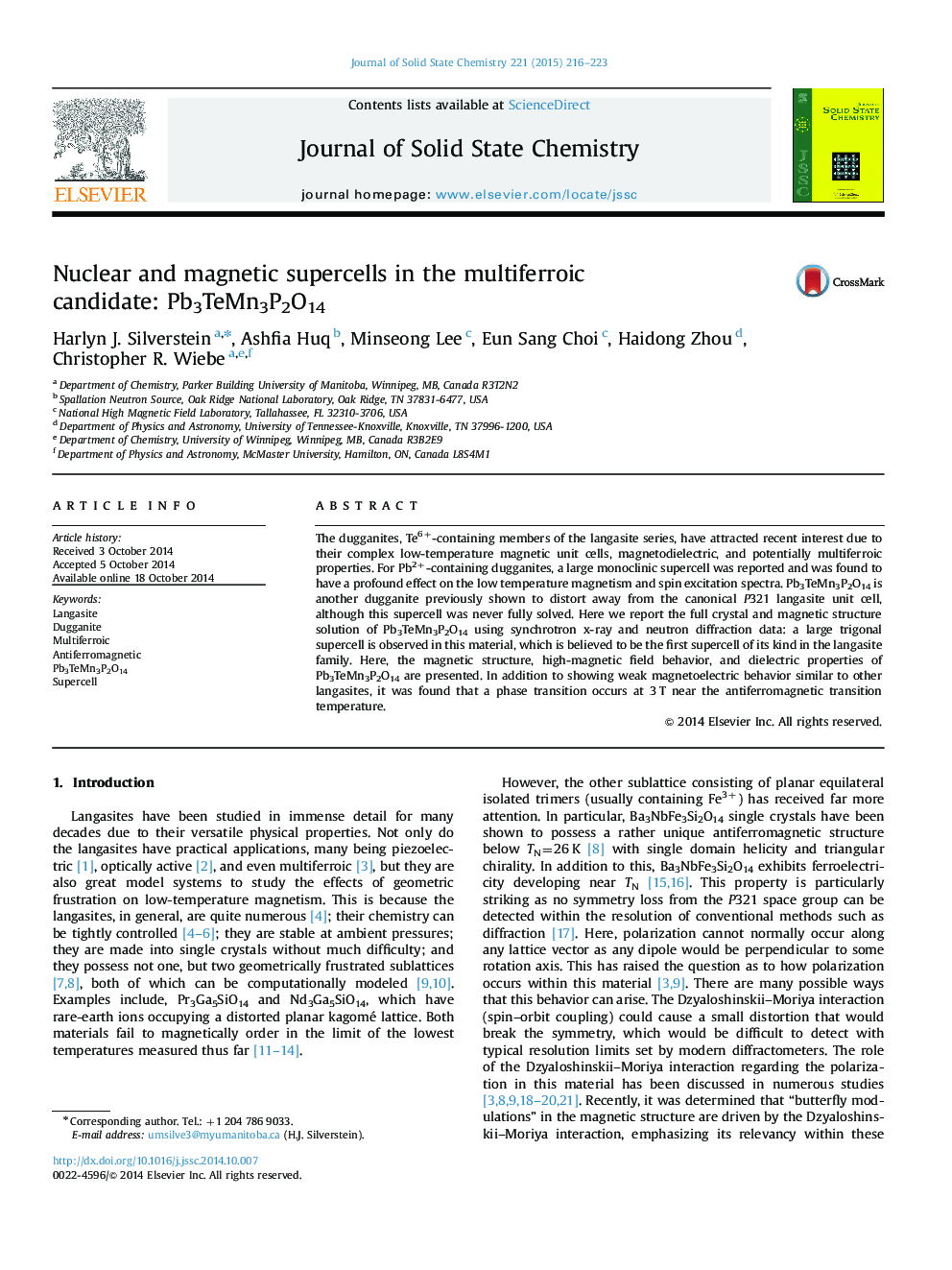| Article ID | Journal | Published Year | Pages | File Type |
|---|---|---|---|---|
| 1329626 | Journal of Solid State Chemistry | 2015 | 8 Pages |
•Large P3 supercell found in Pb3TeMn3P2O14.•Complex helical spin structures below TN=6.6 K.•Phase transition at 3 T found using through dielectric and DC susceptibility measurements.•Moment saturation near 25 T at 1.4 K.
The dugganites, Te6+-containing members of the langasite series, have attracted recent interest due to their complex low-temperature magnetic unit cells, magnetodielectric, and potentially multiferroic properties. For Pb2+-containing dugganites, a large monoclinic supercell was reported and was found to have a profound effect on the low temperature magnetism and spin excitation spectra. Pb3TeMn3P2O14 is another dugganite previously shown to distort away from the canonical P321 langasite unit cell, although this supercell was never fully solved. Here we report the full crystal and magnetic structure solution of Pb3TeMn3P2O14 using synchrotron x-ray and neutron diffraction data: a large trigonal supercell is observed in this material, which is believed to be the first supercell of its kind in the langasite family. Here, the magnetic structure, high-magnetic field behavior, and dielectric properties of Pb3TeMn3P2O14 are presented. In addition to showing weak magnetoelectric behavior similar to other langasites, it was found that a phase transition occurs at 3 T near the antiferromagnetic transition temperature.
Graphical abstractThe nuclear supercell of Pb3TeMn3P2O14, found through joint refinements using high resolution synchrotron X-ray and neutron powder diffraction, retains the trigonal symmetry of the subcell.Figure optionsDownload full-size imageDownload as PowerPoint slide
